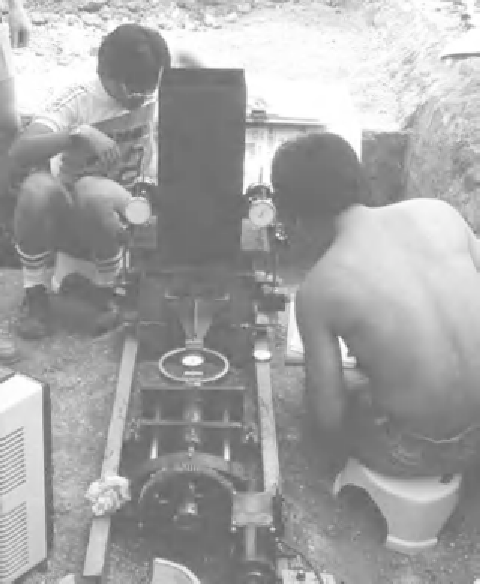Geology Reference
In-Depth Information
Small-scale deformability tests down boreholes include the use of
in
ated rubber packers in soil (pressuremeter) or the Goodman jack in
rock where two sides of the borehole are jacked apart. All such tests are
very small relative to the mass under consideration and need to be
interpreted with due care as to their representativeness. Deformation
at project scale is better predicted from loading tests involving large
volumes. The inclusion of very high capacity Osterberg jacking cells set
within large diameter, well-instrumented bored piles, as discussed in
Chapter 6,
gives the prospect of deriving much more representative
parameters (e.g. Seol & Jeong, 2009). In practice, most rock mass
parameters tend to be estimated from empirical relationships derived
from years of project experience together with numerical modelling,
rather than small-scale tests, as discussed in
Chapter 5.
Field tests are really the only option for measuring hydraulic con-
ductivity (also for oil and gas). Simple tests include falling or rising
head tests in individual boreholes, whereby water is either added to or
pumped out of a hole and then the time taken for water to come back
to equilibrium measured. For realistic indications of behaviour at
eld
scale, however, larger-scale pumping tests are required. Even then,
water
flow is often localised and channelled so tests may not always
be readily interpreted.

